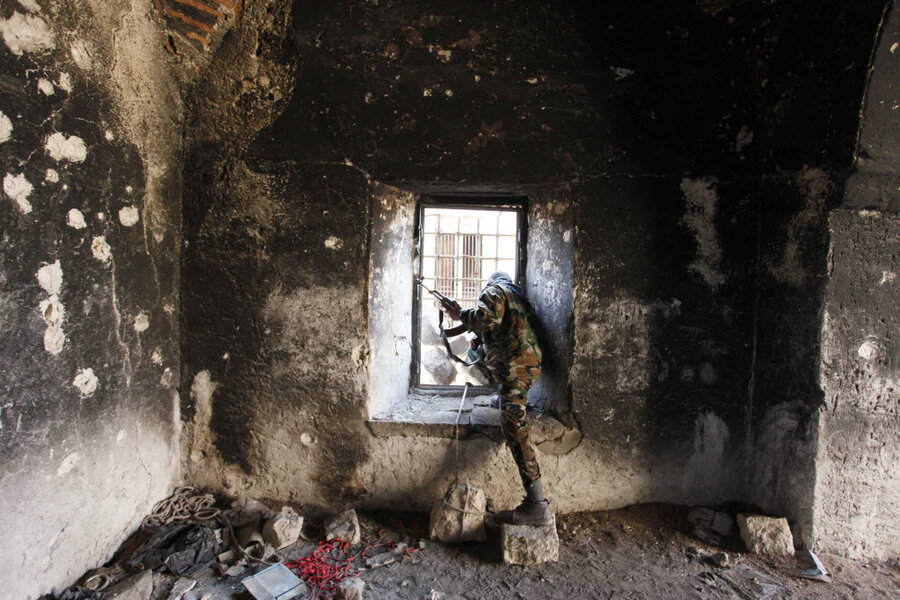Government air raid kills at least 37 in Aleppo
Loading...
| Beirut
Syrian government aircraft dropped barrels packed with explosives on opposition-held areas of the contested northern city of Aleppo on Sunday, leveling buildings, incinerating cars and killing at least 37 people including 16 children, activists said.
Aleppo has been a major front in the Syrian civil war since rebels launched an offensive on the city in mid-2012. Nearly a year and a half of fighting has destroyed much of the city, while also cutting it up into rebel-held and government-controlled areas.
On Sunday, government helicopters pounded the opposition neighborhoods of Haidariya, Ard al-Hamra, Sukhour, Marjeh and at least two others with barrel bombs, the Britain-based Syrian Observatory for Human Rights said. Observatory director Rami Abdurrahman said Syrian air force jets were also flying sorties over the same districts.
The government frequently uses barrel bombs, which contain hundreds of pounds of explosives and cause massive damage on impact.
The Aleppo Media Center activist group said government aircraft dropped at least 25 barrel bombs on the city Sunday.
One amateur video provided by the AMC showed the aftermath of a strike on a roundabout in Haidariya where an informal station for transport vans was located. In the video, residents investigate the smoldering wreckage of at least three vehicles destroyed in the bombing. Sirens wail in the background.
Another amateur video posted online showed the aftermath of a strike on Sukhour. The footage shows a crowd gathered in a narrow street littered with shattered masonry and other rubble from a house that appeared to have been hit by the airstrike.
The videos appeared genuine and corresponded to other AP reporting.
The Observatory, which monitors the conflict through a network of activists on the ground, also said the number people killed in the town of Adra northeast of Damascus after an al-Qaida-linked rebel faction attacked on Wednesday has risen to 32.
Abdurrahman said the dead are primarily members the Alawite sect, as well as a few Druse and Shiite Muslims.
The killings point at the dark sectarian overtones the conflict has taken on since the uprising against President Bashar Assad began with largely peaceful protests in March 2011.
Assad is an Alawite, and members of the offshoot of Shiite Islam form the core of his security forces. Other minorities in the country, including Christians, Druse and Shiites, have mostly sided with Assad or remained on the fence, fearing a takeover of the country by Islamic extremists. The rebels, meanwhile, are primarily Sunni Muslims.
The Observatory and Syria's SANA state news agency both reported fighting in Adra on Sunday.







